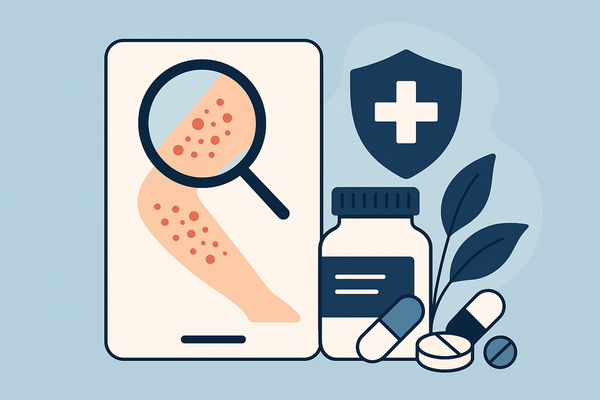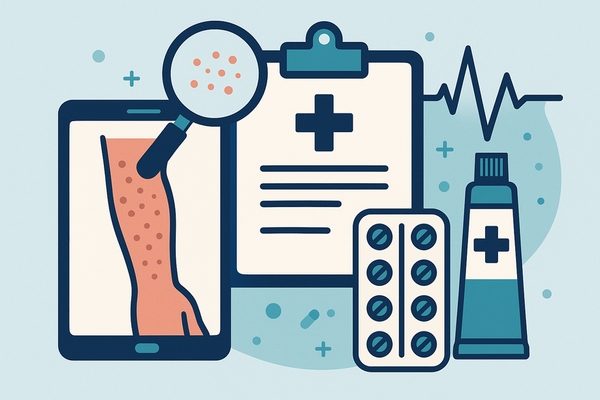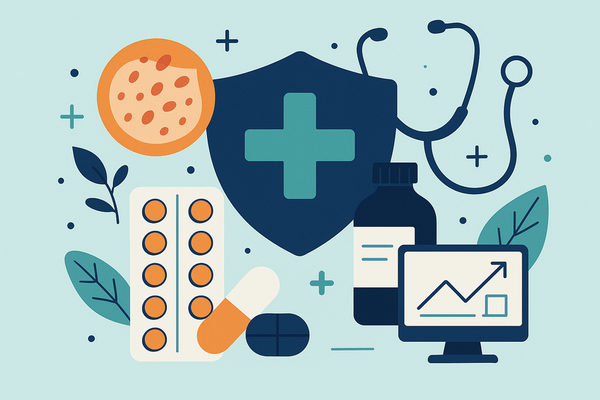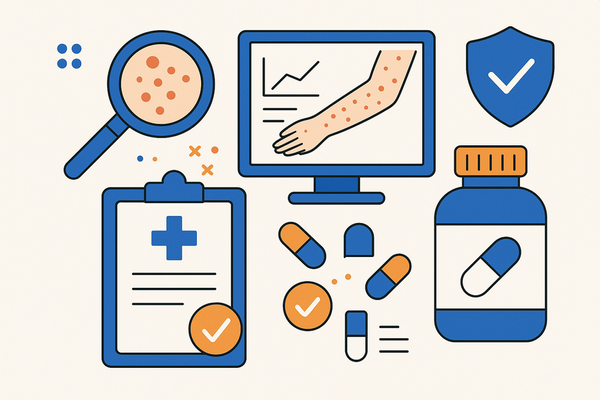Medication Rash Treatment: A Comprehensive Guide
Learn effective medication rash treatment techniques to identify, diagnose, and manage drug-induced rashes with our expert-backed guide.
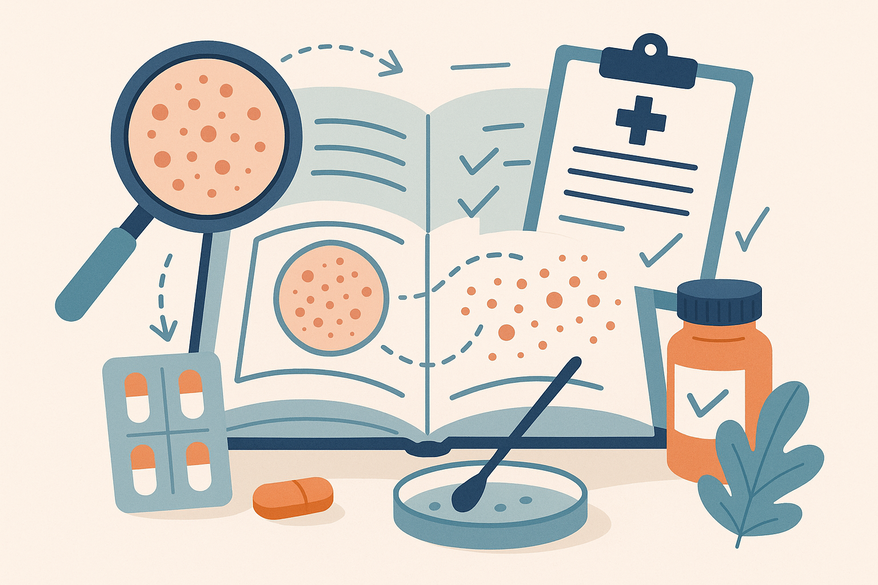
Estimated reading time: 6 minutes
Key Takeaways
- Early recognition is crucial to distinguish mild reactions from life-threatening ones.
- Follow a structured diagnostic approach: patient history, clinical exam, and targeted tests.
- Effective treatments range from drug discontinuation to corticosteroids and epinephrine for severe cases.
- Incorporate practical self-care strategies—cool compresses, moisturizers, and gentle skin care—to support healing.
- Implement preventive measures and consider AI-assisted tools for quick preliminary evaluations.
Table of Contents
- Introduction
- Understanding Medication-Induced Rashes
- Recognizing the Symptoms
- Diagnosing Medication Rashes
- Treatment Options
- Self-Care Home Strategies
- Prevention and Risk Reduction
- Quick AI-Assisted Assessment
- Conclusion
- Additional Resources
Introduction
Medication rash treatment becomes critical when an adverse skin reaction occurs after drug exposure. These rashes result from immune or biochemical pathways reacting abnormally, leading to redness, itching, and sometimes blistering. This guide will walk you through the causes, early detection, and proven management strategies to restore healthy skin.
Understanding Medication-Induced Rashes
Two primary mechanisms underlie these reactions:
- Immune-mediated reactions (Type I immediate allergies to Type IV delayed hypersensitivities).
- Nonimmune biochemical reactions that directly affect skin cells or blood vessels.
Common culprits include:
- Antibiotics (penicillins, sulfa drugs)
- NSAIDs (ibuprofen, naproxen)
- Anticonvulsants (phenytoin, carbamazepine)
Rash types range in severity:
- Maculopapular: flat or slightly raised red spots
- Urticarial: itchy hives or wheals
- Severe forms: Stevens–Johnson syndrome, DRESS (Drug Reaction with Eosinophilia and Systemic Symptoms)
Recognizing the Symptoms
Early recognition significantly improves outcomes. Look for these clinical features:
- Redness and warmth of the skin
- Intense itching or pruritus
- Hives (raised, red welts)
- Blisters or fluid-filled bumps
- Swelling of face, lips, or extremities
Differentiate mild vs. severe:
- Mild: localized morbilliform rash, mild itch
- Severe: widespread blistering, mucous membrane involvement, fever, joint pain
Red flags requiring urgent care:
- Rapidly spreading rash
- Swelling of face, tongue, or throat
- Difficulty breathing or wheezing
- Eye or mouth lesions, pain or bleeding
- High fever (>38.5°C) with rash
Diagnosing Medication Rashes
Accurate diagnosis directs effective treatment. Follow these steps:
Step 1: Detailed Patient History
- List all recent medications and start dates
- Note timing of rash onset after each drug
Step 2: Clinical Evaluation
- Examine rash morphology (shape, size, color)
- Check distribution (localized or widespread)
- Look for systemic signs (fever, lymph node swelling)
Step 3: Diagnostic Tools
- Skin tests (patch tests or prick tests) to confirm allergy
- Blood tests for eosinophil count and liver function (LFTs)
- Skin biopsy to rule out other skin disorders
Always consult a specialist for complex cases (see identifying drug-induced rash symptoms).
Treatment Options
This section covers core treatment strategies:
- Discontinue suspected drug under medical supervision and substitute when possible
- Antihistamines: OTC (cetirizine, loratadine) or prescription strength
- Corticosteroids: topical for mild cases; oral/IV for moderate to severe reactions
- Epinephrine: immediate IM injection for anaphylaxis
- Severe case management: hospitalize Stevens–Johnson or DRESS patients for wound care, fluid support, and organ monitoring
Self-Care Home Strategies
Complement formal treatment with these at-home measures:
- Cool compresses for 10–15 minutes to ease itching
- Fragrance-free moisturizers to restore the skin barrier
- Avoid scratching: trim nails and use cotton gloves at night
- Gentle skin care with mild, dye-free soaps and lotions
- Breathable, loose cotton clothing
- Stay hydrated to support healing
Use OTC antihistamines or emollients for mild rashes; seek medical care if no improvement within 48–72 hours.
Prevention and Risk Reduction
Reduce the risk of future reactions by:
- Informing providers of all drug allergies and past reactions
- Reviewing side-effect profiles before starting new medications
- Monitoring skin daily after beginning therapy
- Documenting rash onset, progression, and related symptoms
- Wearing medical alert jewelry for severe allergy history
- Carrying an epinephrine auto-injector and a written emergency plan
Quick AI-Assisted Assessment
For a rapid, AI-assisted preliminary assessment of your medication rash, try Rash Detector, an AI Skin Analysis App that provides instant skin issue analysis via uploaded images.
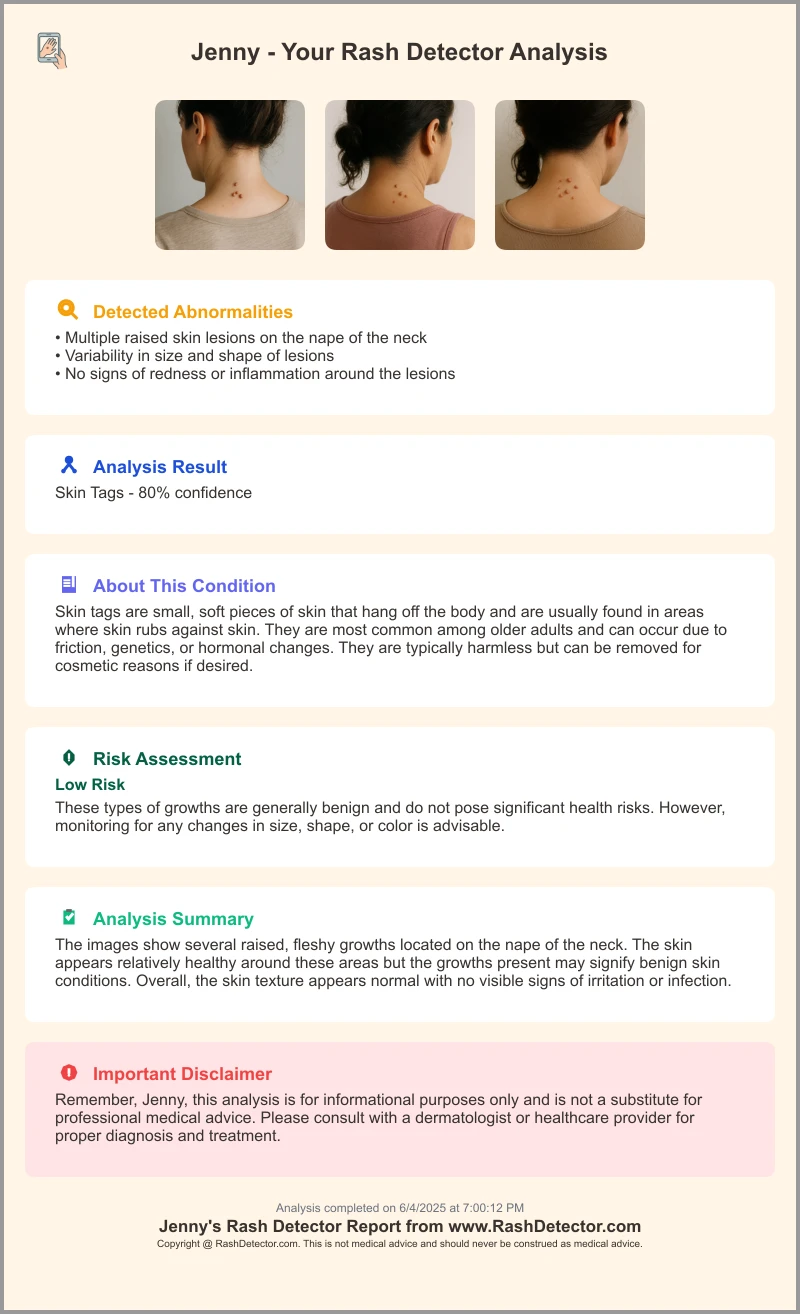
Conclusion
Early identification, precise diagnosis, and timely intervention lead to the best outcomes. Discontinue the offending drug, apply symptomatic therapies such as antihistamines or steroids, and seek urgent care for severe reactions. Pair self-care with professional advice to ensure a swift recovery.
Additional Resources
- American Academy of Dermatology
- American Academy of Allergy, Asthma & Immunology
- NIH MedlinePlus on Drug Allergies
FAQ
What are the common types of medication-induced rashes?
They range from maculopapular and urticarial rashes to severe forms like Stevens–Johnson syndrome and DRESS. Each type has distinct clinical features and risks.
When should I seek emergency care for a rash?
If you experience rapid rash spread, facial or throat swelling, difficulty breathing, high fever, or mucous membrane involvement, call emergency services immediately.
How are medication rashes diagnosed?
Diagnosis involves a thorough medication history, clinical examination, and targeted tests such as skin patch/prick tests, blood work, or biopsy to confirm the cause.
Can preventive measures reduce the risk of drug rashes?
Yes. Always inform healthcare providers of past reactions, monitor new medications closely, carry an epinephrine auto-injector if indicated, and wear medical alert identification.


